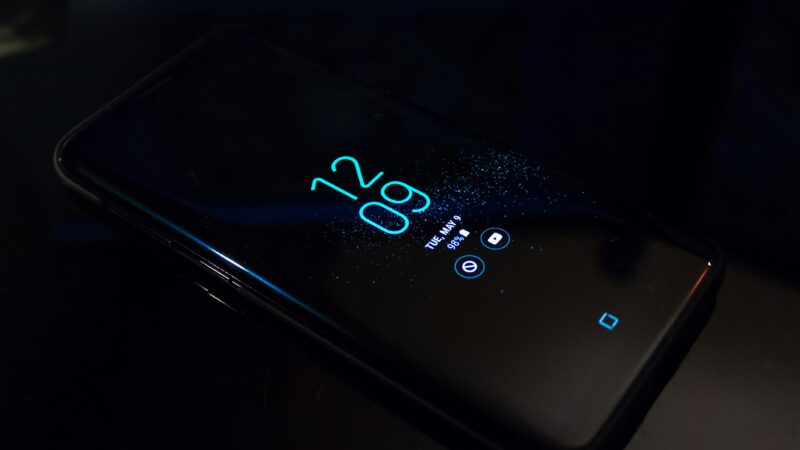The future of EVs in the US

The future of EVs in the US: Today, EV’s are becoming more popular because they’re seen as better for the environment compared to gas cars. The government is pushing for them with incentives and maybe some regulations. But there are challenges too, like charging infrastructure and battery costs.
Today, EVs are charging into the mainstream, powered by advancements that promise to transform our roads, cities, and way of life. The U.S. electric vehicle (EV) market is significantly growing its sales and market share to strengthen its position in the automobile industry by increasing its sale up to 20% in 2025. These numbers reflect a decade of increasing consumer confidence in EV technology and a broader acceptance of electric vehicles as a primary mode of transportation, entering a transformative phase driven by technological advancements, government policies and shifting consumer demand. America is accelerating towards a clean energy future keeping in mind the environmental concerns and fuel efficiency understanding consumers choice.Then there’s the technology part. Batteries are crucial. The cost of lithium-ion batteries has been dropping, which makes EVs more affordable. But there are issues with raw materials—like lithium, cobalt, nickel. Where are these sourced? There might be supply chain issues. Also, battery recycling is a thing now. Companies are working on that to make it sustainable. Then there’s the range of EVs. It’s improving, but some people still have range anxiety.
Infrastructure is another tech aspect. How many charging stations are there? Are they fast chargers? The US is investing in this, like the NEVI program. But maybe rural areas don’t have enough yet.
Consumer adoption is another area. People’s attitudes matter. Some are early adopters, but others are hesitant. Why? Maybe because of higher upfront costs, even though operating costs are lower. Also, lack of charging at home for people who live in apartments. Education and awareness—do people understand the benefits? Maybe not everyone. Then there’s the variety of models. More automakers are offering EVs now, from trucks to SUVs, which might attract different buyers.
Here’s a comprehensive look at the EV landscape in the US:
1.Projected growth & Adoption Trends:
- 2030: 40% of new car sales (Bloomberg NEF).
- 2035: 50–60% (if federal/state mandates hold).
Key Drivers:
- Falling battery costs (expected to drop 40% by 2030).
- More affordable models (25,000–25,000–35,000 range).
- Improved charging infrastructure.
2.Government Policies & Incentives
- Federal Support:
- Inflation Reduction Act (IRA) Tax Credits: Up to $7,500 for qualifying EVs (must meet battery sourcing & assembly rules).
- EPA Emissions Rules: Require 50% EV sales by 2030 (under review but pushing automakers).
- Bipartisan Infrastructure Law: $7.5B for EV chargers (goal: 500,000 chargers by 2030).
- State-Level Push:
- California & 17 states plan to ban new gas cars by 2035.
- Texas, Florida, and others resisting mandates but still investing in EVs.
3.Key Challenges
A. Charging Infrastructure Gaps
- Current Status: ~180,000 public chargers (only ~30,000 are fast chargers).
- Tesla’s Supercharger dominance (now opening to Ford, GM, Rivian, etc.).
- Reliability issues (non-Tesla networks often have broken chargers).
B. Affordability & Consumer Concerns
- Average EV price: ~55,000(vs. 55,000(vs. 48,000 for gas cars).
- Solutions coming:
- Tesla Model 2 (~$25,000, 2025).
- Chevy Bolt reboot (2025, under $30K).
- Hyundai IONIQ 3 (2026, ~$35K).
- C. Battery Supply & Materials
- Dependence on China (controls 70%+ of battery materials).
- U.S. Efforts:
- New lithium mines (Nevada, California).
- Battery recycling (Redwood Materials, Li-Cycle).
4. Technology & Innovation
A. Next-Gen Batteries
- Solid-State Batteries:
- Toyota, Quantum Scape, and Samsung targeting 2027–2030.
- 2x energy density, faster charging, safer.
- Sodium-Ion Batteries (Cheaper, no lithium—BYD & CATL leading).
B. Autonomous EVs
- Tesla FSD, GM Ultra Cruise, Hyundai’s HDP2 advancing.
- Robotaxis: Waymo (Google), Cruise (GM), and Zoox (Amazon) expanding.
C. Vehicle-to-Grid (V2G) & Bidirectional Charging
- Ford F-150 Lightning, Hyundai IONIQ 5 can power homes.
- Future EVs may sell energy back to the grid.
5. Automaker Strategies
- Tesla Cyber truck
- Price: Starts at 60,990 (Rear−WheelDrive), upto 60,990 (Rear−WheelDrive), upto 99,990 (Cyberbeast).
- Range: 250–340 miles (EPA est.), extended to 470+ miles with a range extender.
- Production: ~125,000 reservations (as of 2024), ramping up slowly due to manufacturing challenges.
- Competition: Rivian R1T, Ford F-150 Lightning, Chevrolet Silverado EV.
- Tesla Model 2 ($25,000 EV – Expected 2025/26)
- Price: 25,000–25,000–30,000 (before incentives).
- Range: 250–300 miles (LFP battery).
- Platform: Next-gen unboxed manufacturing (faster, cheaper production).
- Competition: Chevy Bolt, Hyundai IONIQ 3, VW ID.2.
- Tesla Robotaxis (Expected 2024–2026)
- No steering wheel or pedals (fully autonomous).
- Purpose-built for ride-hailing (Tesla Network).
- FSD (Full Self-Driving) required (currently 8,000–8,000–15,000).
- Tesla’s Cyber truck, Model 2, and Robotaxis could redefine the U.S. auto industry—if execution succeeds. The Model 2 may be the most important, bringing EVs to the masses.
- Ford’s Next-Gen EVs (2025–2026)
- New Electric Platform
- Code Name: “TE1” (replaces current “GE1” used in Mustang Mach-E, F-150 Lightning).
Key Improvements:
- 30% cost reduction in battery and manufacturing.
- Smaller, more efficient batteries with LFP (Lithium Iron Phosphate) options.
- Faster charging (targeting 10–80% in under 20 mins).
- Expected Models
- Ford Explorer EV (2025) – A cheaper, compact SUV
- Price: 35,000–35,000–40,000 (before $7,500 tax credit).
- Range: ~300 miles (target).
- Battery: LFP (cheaper, longer-lasting).
- Competition: Tesla Model Y, VW ID.4, Hyundai IONIQ 5.
- Ford Bronco EV (2026) – Electric version of the iconic off-roader.
- Ford Ranger EV (2026) – Electric pickup to rival Chevy Silverado EV.
How Ford Stacks Up Against Competitors
| Brand | 2025 Affordable EV | Key Advantage |
| Ford | Explorer EV (~$35K) | Brand loyalty, truck/SUV expertise. |
| Tesla | Model 2 (~$25K) | Price, charging network, tech. |
| Hyundai | IONIQ 3 (~$35K) | 800V charging, sleek design. |
| Chevy | Equinox EV (~$30K) | Low price, Ultium platform. |
6. 2030 & Beyond
- 2025–2030: More affordable EVs, better charging, solid-state batteries in testing.
- 2030–2035: Gas car sales decline, V2G becomes mainstream, autonomy expands.
- Post-2035: Potential dominance of EVs, hydrogen for trucks, and AI-driven mobility.
The Road Ahead: Can Ford Catch Tesla?
- 2025: Explorer EV launch, next-gen platform debuts.
- 2026: More affordable EVs (possibly Bronco/Ranger electric).
- 2027+: Fully autonomous EVs? (Ford invests in Argo AI tech).
Biggest Challenges
- Tesla’s price war (Model Y under 40K,Model2at40K,Model2at25K).
- Hyundai/Kia’s tech lead (800V charging, longer range).
- GM’s Ultium platform (Silverado EV, Equinox EV).
- Ford’s Explorer EV and next-gen platform could revive its EV ambitions—if priced right. But Tesla’s Model 2 and Hyundai’s IONIQ 3 will be tough rivals.







